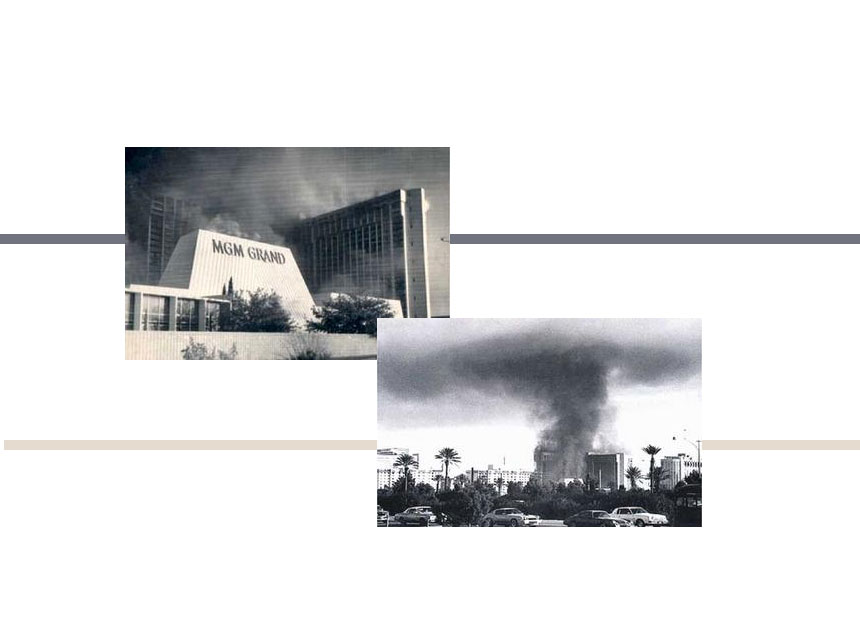
November 21 marks the anniversary of the 1980 MGM Grand Hotel fire in Las Vegas, Nevada, in which 84 guests perished, many from asphyxiation, and hundreds were injured. (Fire Engineering, March 1981. CLICK HERE to download as a PDF, 742 KB). The alarm was called in at 7:17 a.m., and although the fire was brought under control by 8:30 a.m., it was not until 12 noon that the 23-story, 2,076-room hotel was fully evacuated. Where there were sprinklers, the fire was “stopped in its tracks,” according to Chief Roy Parrish, but the structure was only partially sprinklered; the restaurant where the fire originated and the casino were not. Many victims died from asphyxiation from the fire’s toxic smoke (from the burning of plastics used in the hotel’s furnishings and finishes). The smoke spread through elevator shafts and stairwells to the upper floors. About three months later, another eight would perish as a result of a fire at the Las Vegas Hilton.
1981: Residential Fire Prevention Viewed From Many Angles at USFA Meeting
High-Rise Firefighting Perils: Veterans’ Perspectives
FireRescue: MGM Grand Hotel Fire Anniversary
Clark County Fire Department: MGM Hotel Fire – Nov. 21, 1980
A separate Fire Engineering article in the same issue considered the emergency medical service (EMS) aspects of the tragedy (CLICK HERE for PDF, 1.3 MB). One of the four hospitals at which victims were evaluated had just two days prior to the fire participated in a simulation involving an airplane crash in a residential neighborhood. Within 45 minutes of receiving the report of the MGM fire, it was activated and ready.
Medical Aspects of Tragedy At MGM Fire in Las Vegas
According to Fire Engineering Technical Editor Mike McEvoy, the MGM fire illustrated how construction trends at the time and continuing today have dramatically shifted not only our firefighting strategy and tactics, but victim survivability profiles. “Had the EMS and medical community been investigating fire deaths in greater detail, they would have noticed before being confronted with hundreds of victims from a single fire, that the pattern was changing. Smoke inhalation had, in 1980, become the leading cause of death and remains so today. Burns, the leading cause of death in the 1800s, had been surpassed by the gaseous poisons emitted from petroleum containing and synthetic materials ubiquitous in modern buildings. The medical side of the fire service today is gradually acquiring better tools to resuscitate fire victims. These advances result from a better understanding of how fire victims die, as the medical community sought to discover after the MGM fire.”
As a result of these two disasters, Clark County enacted much stricter fire codes requiring among other things, complete sprinkler systems for the new hotels and retrofitted older hotels with sprinklers. Click here for more.
The benefit to public safety was demonstrated when a fire broke out at the 32-story 3,002-room Monte Carlo hotel and casino in 2008. In that incident, the sprinklers operated and an evacuation plan was effected. As a result, there were only 17 mostly minor injuries; 12 people were transported to the hospital. Nobody died.
Fire Strikes Las Vegas High-Rise
Fire Engineering contributor Greg Havel noted that the 2008 article reinforces just how well automatic sprinklers work and just how nasty the products of combustion were more than 30 years ago, adding that they “are even nastier today because almost all of our furniture and furnishings are plastics and other synthetics.”

